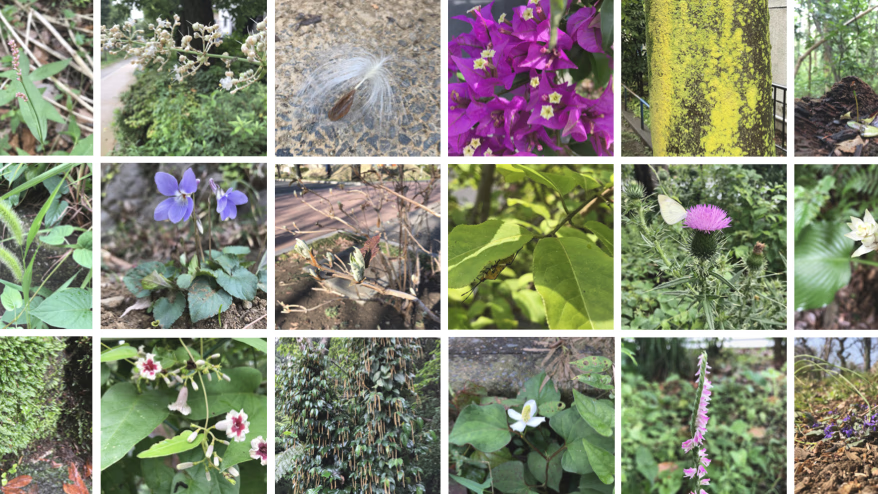こんにちは。チェック担当の村上です。
このコーナーでは、散歩をしている途中で見かける、身近な植物をご紹介していきます。
その前に、簡単に私のことを紹介させていただきます。
私の祖父が理科の教師で特に植物に詳しく、また田舎ではよくあるように庭に花壇と畑があって日常的に植物に触れており、自然と私もそれらに興味を持っていました。
実家を離れてからはそういったことも次第に忘れていき、けれどもどこか後ろ髪ひかれるような、そんな感覚を覚えていました。
転機となったのは2017年の、徳島県にある自然スクールTOECさんでの研修でした。
TOECさんは、「今、やりたいこと」を子ども、スタッフで相談して1日をデザインするフリーキャンプなどを行っているところです。そこで思いっきり外で遊び、話を伺ったことをきっかけに、久しく忘れていた生き物への興味がよみがえってきました。
それ以降、生き物を探しに公園や山にいくようになりました。以前は休日に出かけるのが億劫で家にこもりがちでしたが、いつの間にか楽しみになっています。
もしかしたら、忘れてしまった幼いころの記憶を取り戻そうとしているのかもしれません。
今年は移動を控えているぶん、身近なところに目を向ける機会であるとも言えます。
たとえば近所のちょっとした公園や通勤で歩く道もよい観察場所になります。
「図鑑」と銘打っていますが、私も修行を始めたばかりの身。アカデミックなものではなく、私の目線で身近な植物などを紹介していきたいと思います。
今回は自宅や代々木のオフィス周辺で見かける植物のうち、個人的になじみのあるものを取り上げてみました。
もし興味をお持ちになられたら、ぜひご自身で観察したり、調べたりしてみてください。
※観察の際は周囲の植物を傷めたり、人家を覗きこんだりしないようにしましょう。
ネジバナ(モジズリ)
~個性豊かで身近な蘭~
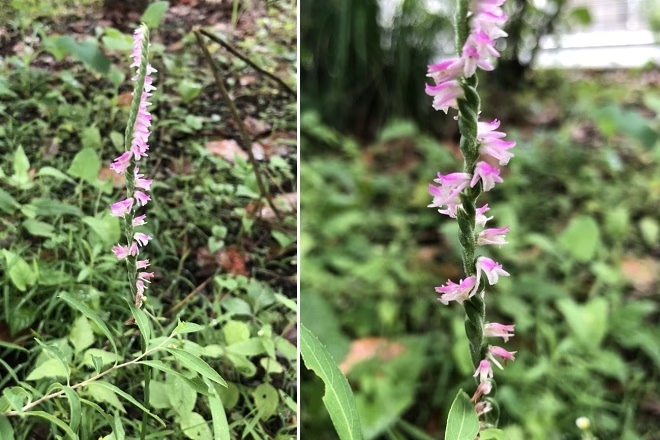
ラン科の植物で、小さいピンクの花をらせん状に咲かせます。
公園や道端で見ることができます。
葉は地面近くにあり目立ちませんが、花茎はにょっきりと伸びて30センチを超えることもあるようです。
また個体差があり、花のねじれ方が右向きだったり左向きだったり、あんまりねじれていなかったり…そういう個性豊かなところもこの花の魅力の一つではないでしょうか。
愛好家の方もいらっしゃるようで、ときどき鉢植えで育てているのを見かけることも。私もきれいな花とその特徴的な咲き方に惹かれます。
さらにネジバナは、根で土の中にいる菌類と共生関係を結んでいて、光合成で作った栄養を菌類に渡す代わりに、菌類から地中の養分をもらっているのだとか。私もこのあたりのことについては話を聞いたことがある程度ですが、少し調べただけでも生態系の複雑さが垣間見えるようです。
地中のミクロの世界に思いを馳せるのも楽しいですね。
ヤブカラシ(ヤブガラシ)
~虫たちの喫茶店?~
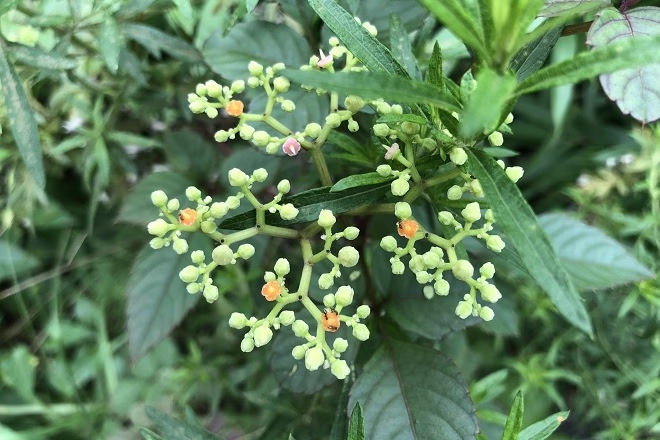
初夏あたりから花を咲かせる、つる性の植物です。
花は一見地味ですが、そこがヤブカラシの特徴的なところでもあります。
たくさんの小さな花が集まって咲き、蕾の黄緑色と咲いた後のオレンジ色が遠目にはドット絵のように見えて面白いです。
またチョウやハチたちが蜜を吸いにきていることもあります。蜜に夢中のときは近づきやすいので昆虫の観察や撮影にもいいポイントだと思います。
※ハチに手出しをすると刺されることがあるので注意しましょう。
ブドウ科なのですが、実をつけているのを見た記憶がありません。
実のならない株もあるそうですが、これまでノブドウと間違えていたのか、あるいは視界に入っていても気づいていなかったのかもしれません。
葉は小さな葉5枚に分かれるので、花が咲いていなくても見分けがつきやすいのではないでしょうか。

育つにつれて植栽など周囲のものに絡みついていくので、見栄えが悪く感じられるかもしれません。
しかし春先、まだ緑の少ない枯葉の地面から赤みがかった芽を出すのが印象的です。
赤い芽には萌芽のイメージが強くある気がしていて、それを見ると「ああ今年も芽生えの季節だな」と感じる、私の風物詩のようなものになっています。
ヒルガオのなかま
~淡いピンク色の花が美しい~
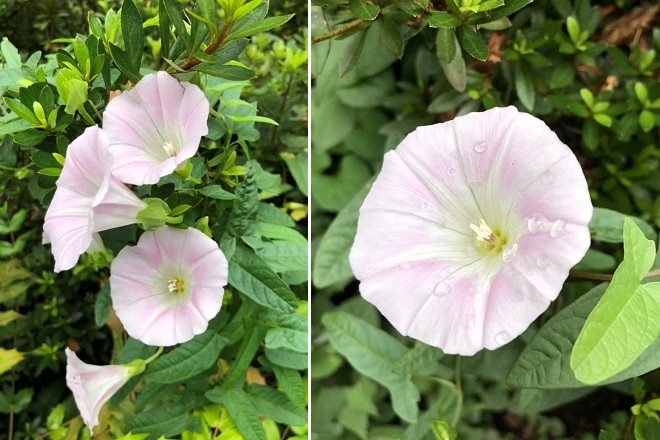
町なかの植え込みなどでよく見かける、ヒルガオ科の植物です。
夏の花としてなじみの深いアサガオと同科で、邪魔な雑草として見られることの多いヒルガオも、きれいな花を咲かせます。
写真のものはヒルガオかコヒルガオのどちらかだと思いますが、大きさで見分けるのは(少なくとも私には)難しいので、詳しく知りたいときは他の特徴を確認します。
その一つとして拡大写真の赤く囲ったところ――花柄にひだのようなものが見えることから、おそらくこれはコヒルガオではないかと思います。ヒルガオの場合はここにひだのようなものはなく丸くなっています。
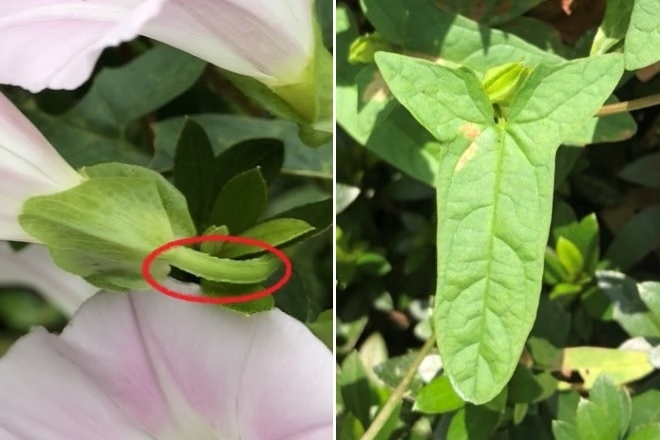
ヒルガオやコヒルガオの葉は(少し違いはあるそうですが)どちらも細長で付け根のほうが左右に出っ張っていて、クリオネのようなシルエットをしています。葉だけでも、ヒルガオのなかまかそうでないかの区別はできそうです。
町なかで見られるつる性の植物はいくつかあり、花が咲いていないと見分けがつきにくいものです。先述のヤブカラシやこのヒルガオのなかまのように、葉の形でおおよそのところが分かるようになると観察もさらに面白くなるのではないかなと思います。
ヨウシュヤマゴボウ(アメリカヤマゴボウ)
~ブドウじゃなくてゴボウだよ~
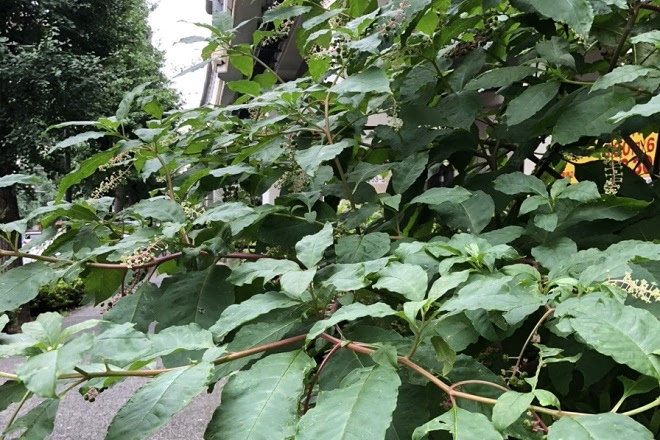
赤く太い茎に大きな葉。ぐんぐん伸びて夏には2m以上になることもある植物です。
秋になると黒っぽい実をつけます。
目立つので、名前を知らなくても見たことはあるという方も多いのではないでしょうか。
名前の「ヨウシュ」は漢字で洋種と書き、もともと日本にいた種ではなく帰化植物のひとつです。
私の出身地の熊本でもよく見かけます。
母は小さいころに遊びで実を食べて口を真っ赤にしていたと言っていましたから、数十年前にはすでに定着していたのでしょう。
※注意!この植物は毒を持っています。食べてはいけません!
ちょっと見るとブドウの房のように実をつけるので、幼いころはなぜ「ブドウ」でなく「ゴボウ」なのだろうと疑問に思っていましたが、ヤマゴボウ科の植物なのだそうです。
実際に根を見たことがなかったので、オフィスの裏に生えていたヨウシュヤマゴボウを抜いてみました。
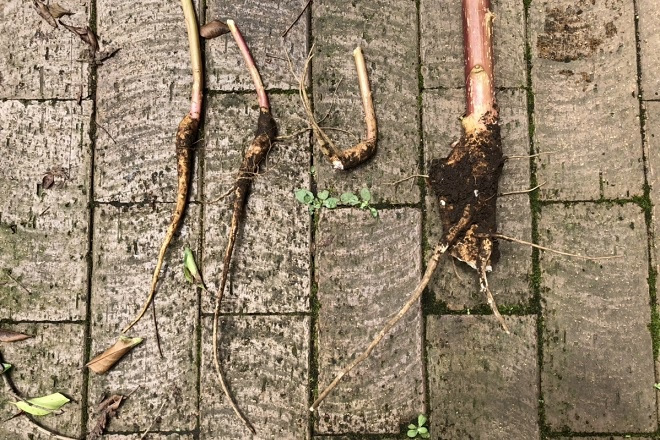
大きいものは途中で折れてしまいましたが、小さいものはほぼ完全に抜けました。
少し曲がっていますが、太い一本の根が伸びているところがゴボウに似ていますね。
※似ていても食べられません!
今回取り上げたのはわずかですが、都会でも意外に多くの草花を見ることができます。公園など緑の多いところはなおさらです。
いつもよりゆっくり歩きながら、身近にいる生き物たちにフォーカスしてみてはいかがでしょうか?
おまけ:オフィスでヨウシュヤマゴボウの根を抜く村上(撮影:齊藤)。
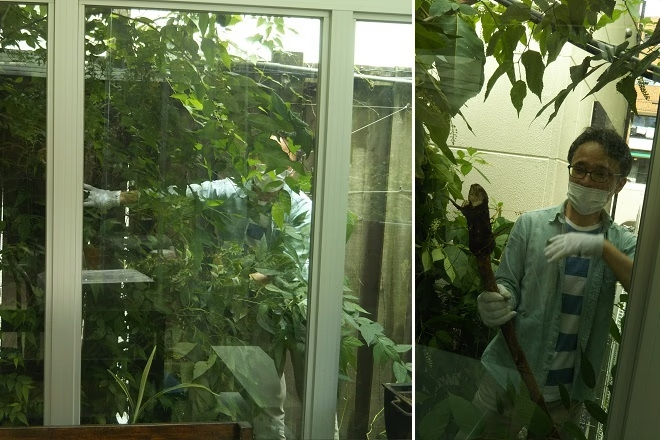
参考文献:
岩槻秀明『子どもに教えてあげられる散歩の草花図鑑』(ビジュアルだいわ文庫, 2017年)
山田隆彦『自然散策が楽しくなる!草花・雑草図鑑』(池田書店, 2020年)
